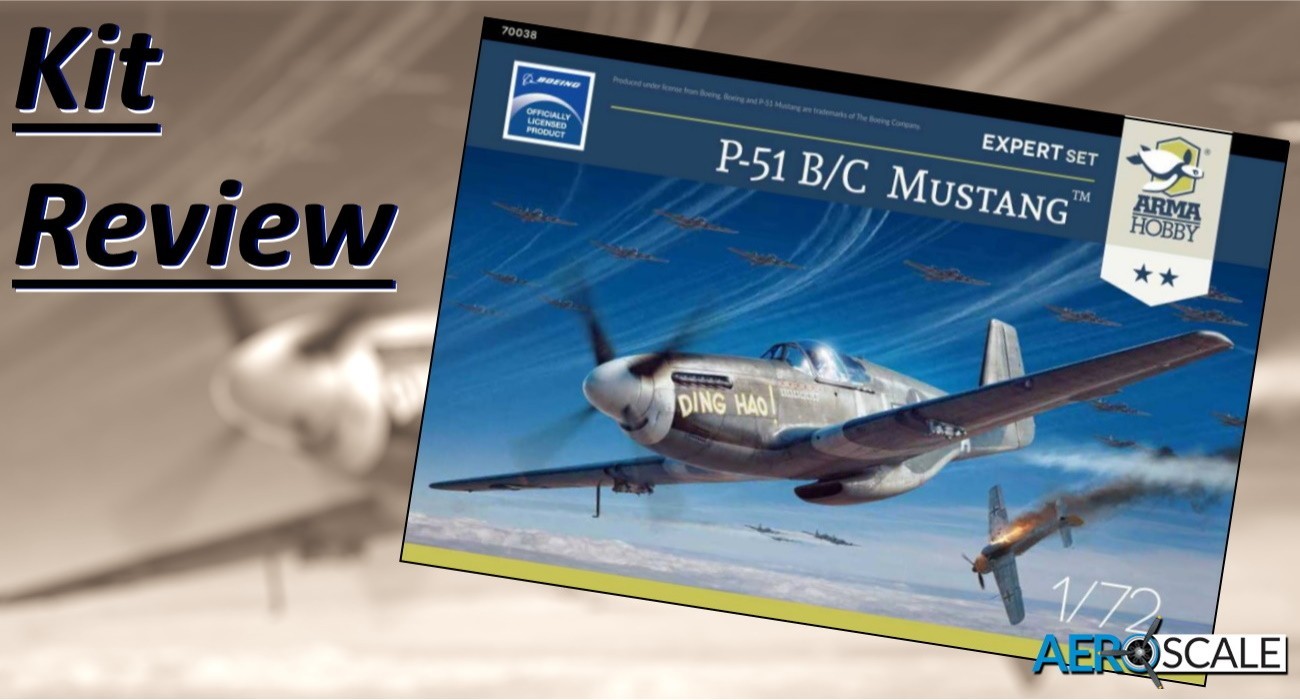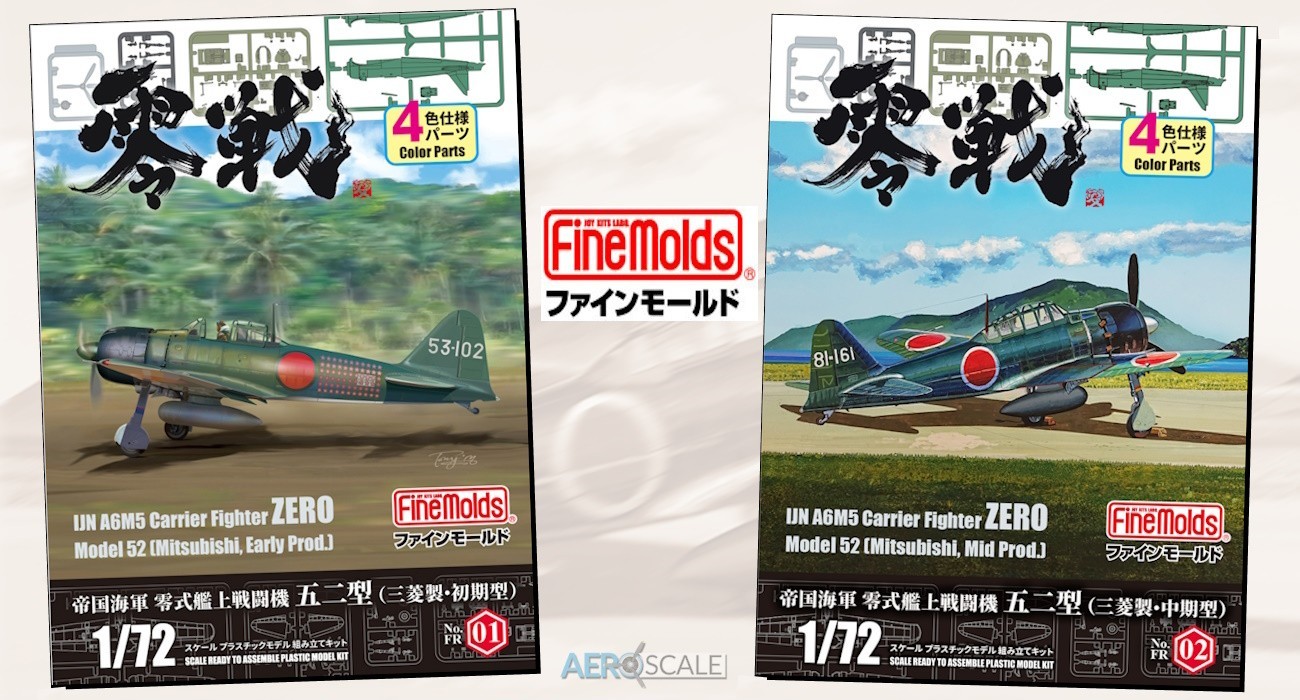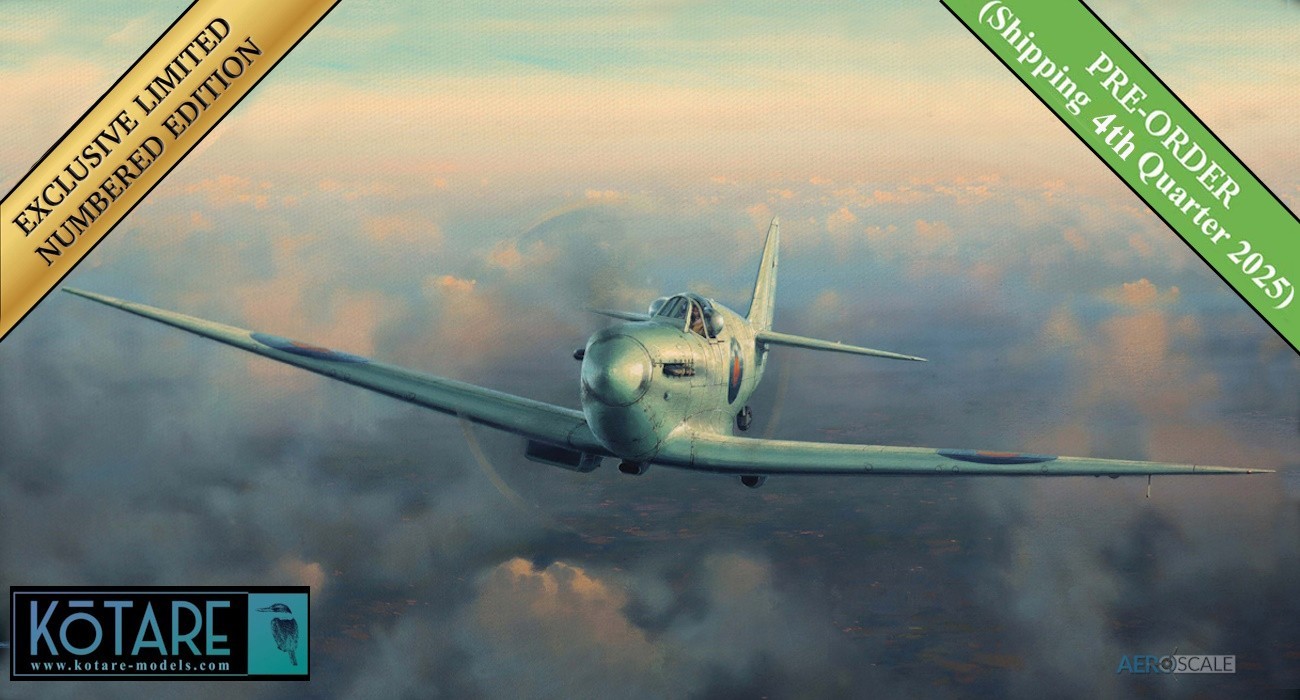
Background
The British Purchasing Commission approached North American Aviation [NAA] to build Curtiss P-40 under license for the RAF. NAA instead proposed the design for a higher performance fighter. Once the contract was agreed the prototype NA-73X airframe was rolled out 102 days later [09/09/1940] with the first flight on 26th October the same year. The Mustang Mk.1 operated by the RAF was powered by the Alinson V-1710, similar to the engine of the P-40. So, the early P-51’s were affected by the same drop in performance with altitude as its predecessor. The P-51B/C (Mustang Mk III) was fitted with the Rolls-Royce Merlin transforming the aircraft's performance at altitudes.
With the introduction of the US in WWII the USAAF's Eighth Air Force operated the Merlin powered P-51Bs and P-51Cs for escort duties while the RAF and the USAAF's Ninth Air Force Mustangs were used in the fighter bomber role. A number of the P-51B and P-51C aircraft were fitted for photo reconnaissance and designated F-6C and were used for tactical reconnaissance.
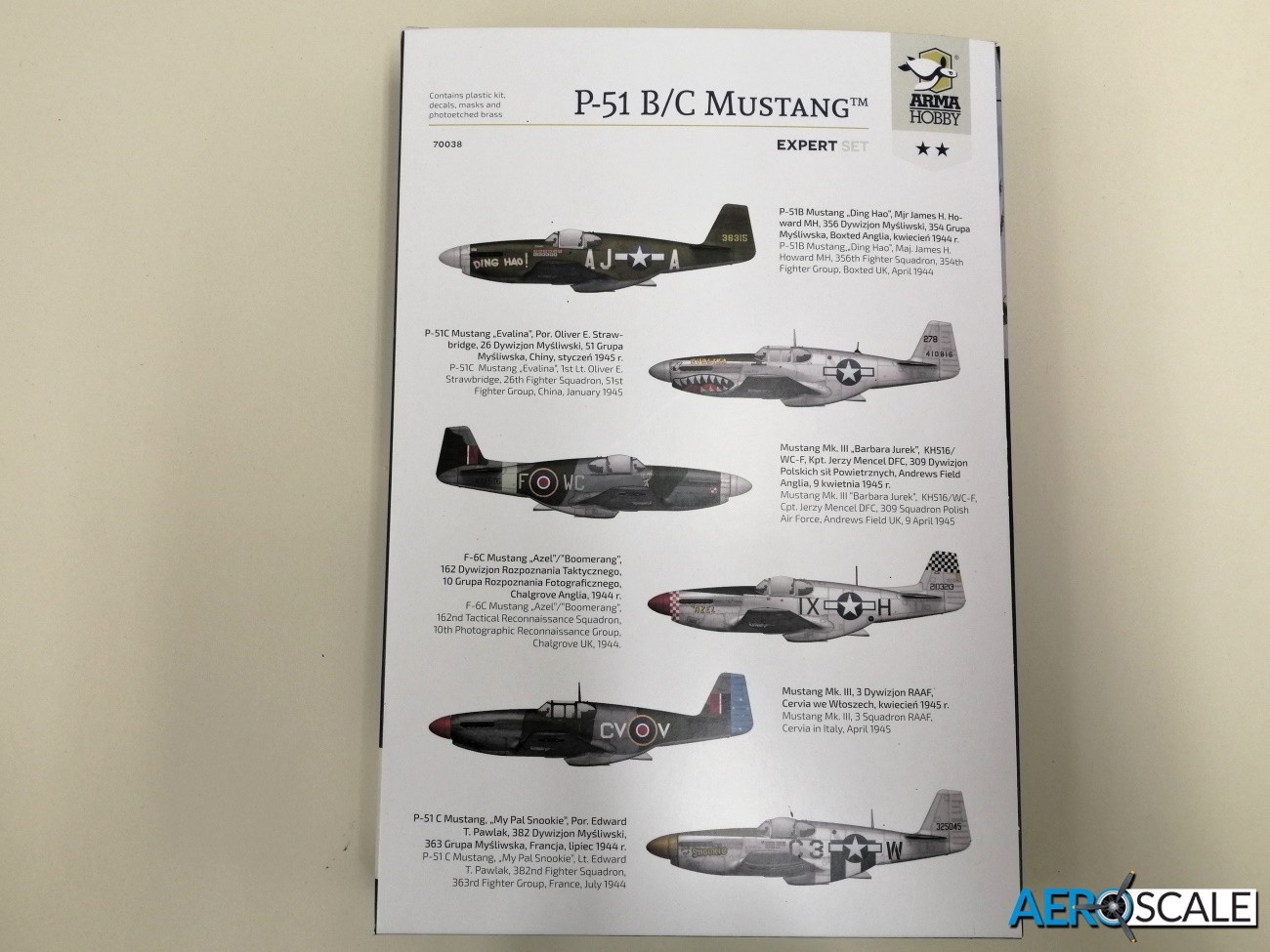
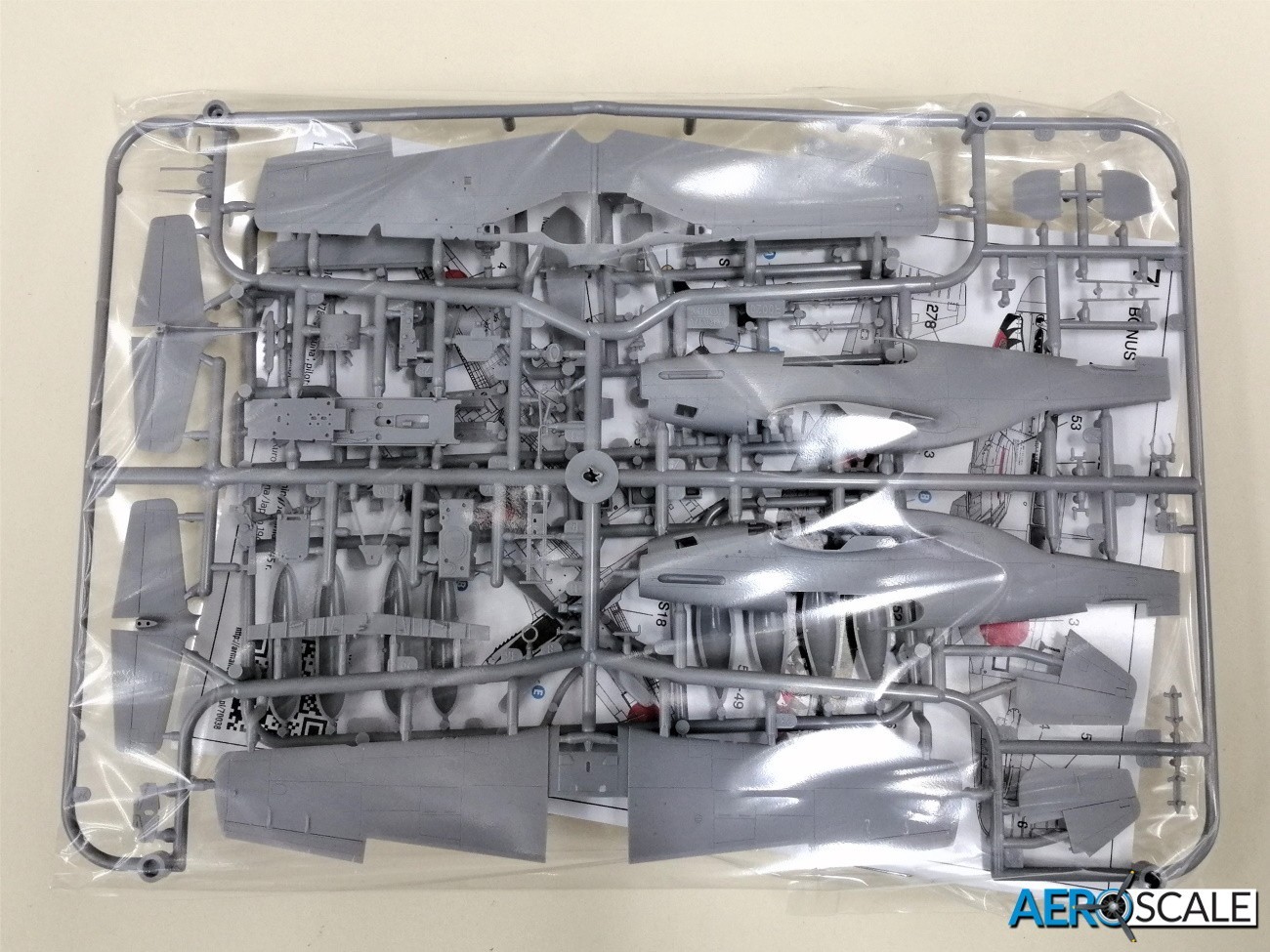
The Kit
The parts for the Mustang are contained in a side opening box. All the contents are placed in a single bag and inside are separately packed clear parts with the decals placed inside the instructions. The photo etched [PE] raw brass fret and vinyl masks sharing the same bag. Taking the sprues out of the bag and there’s a real wow factor looking at the quality of the recessed and raised detail. Its crisp and well defined, consistent and quite subtle in places making it, highly suitable for natural metal finishes.
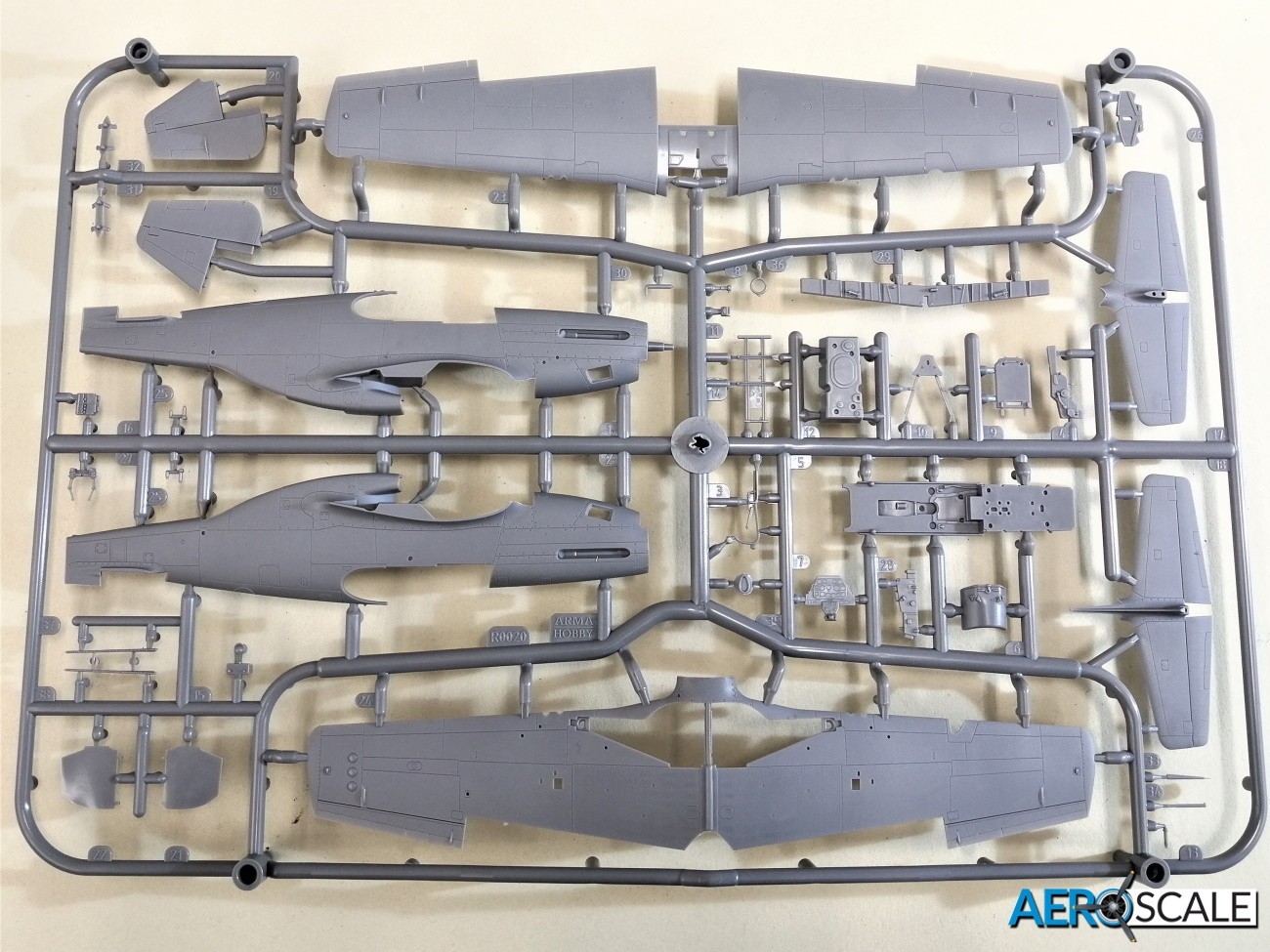

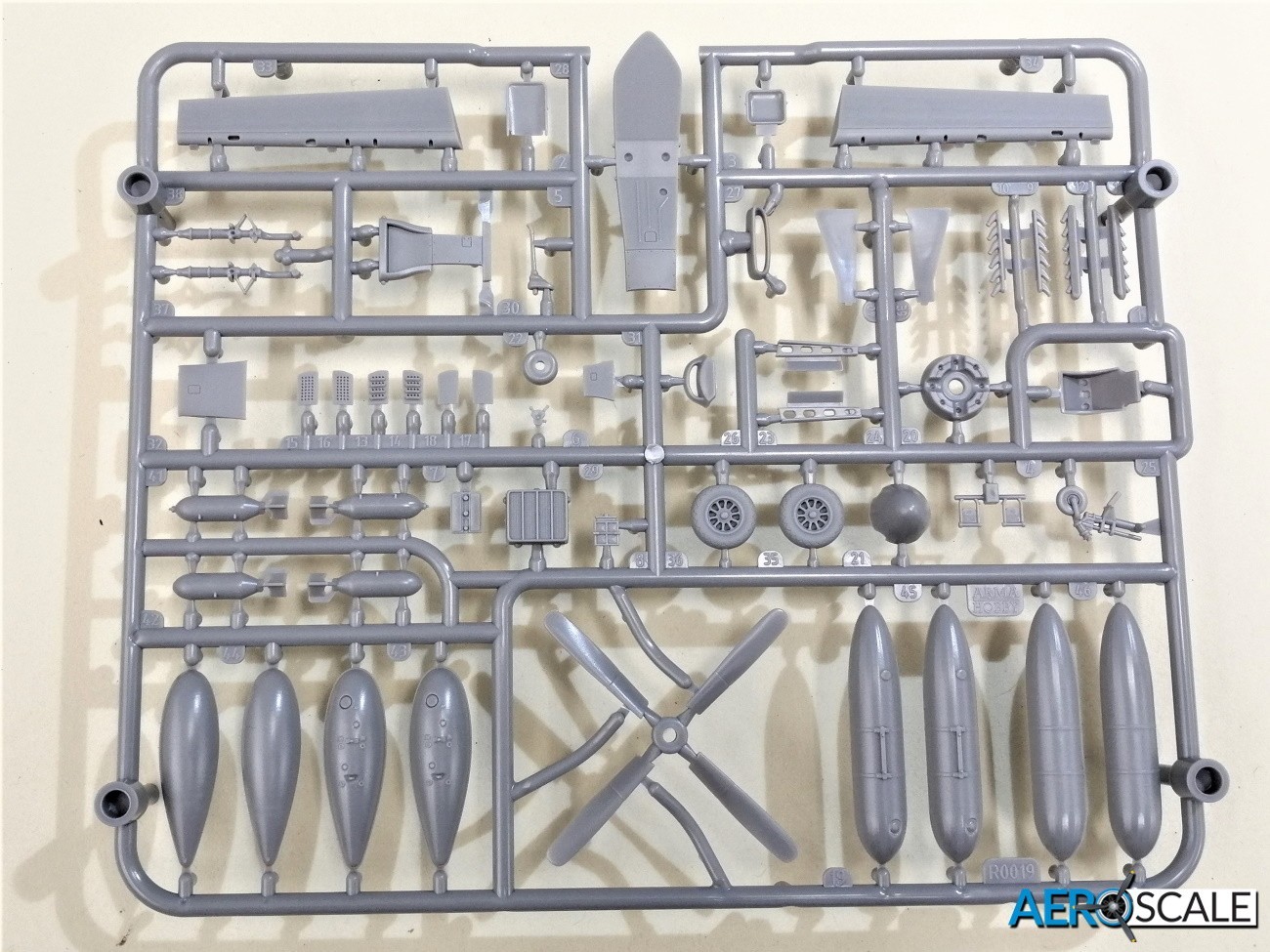
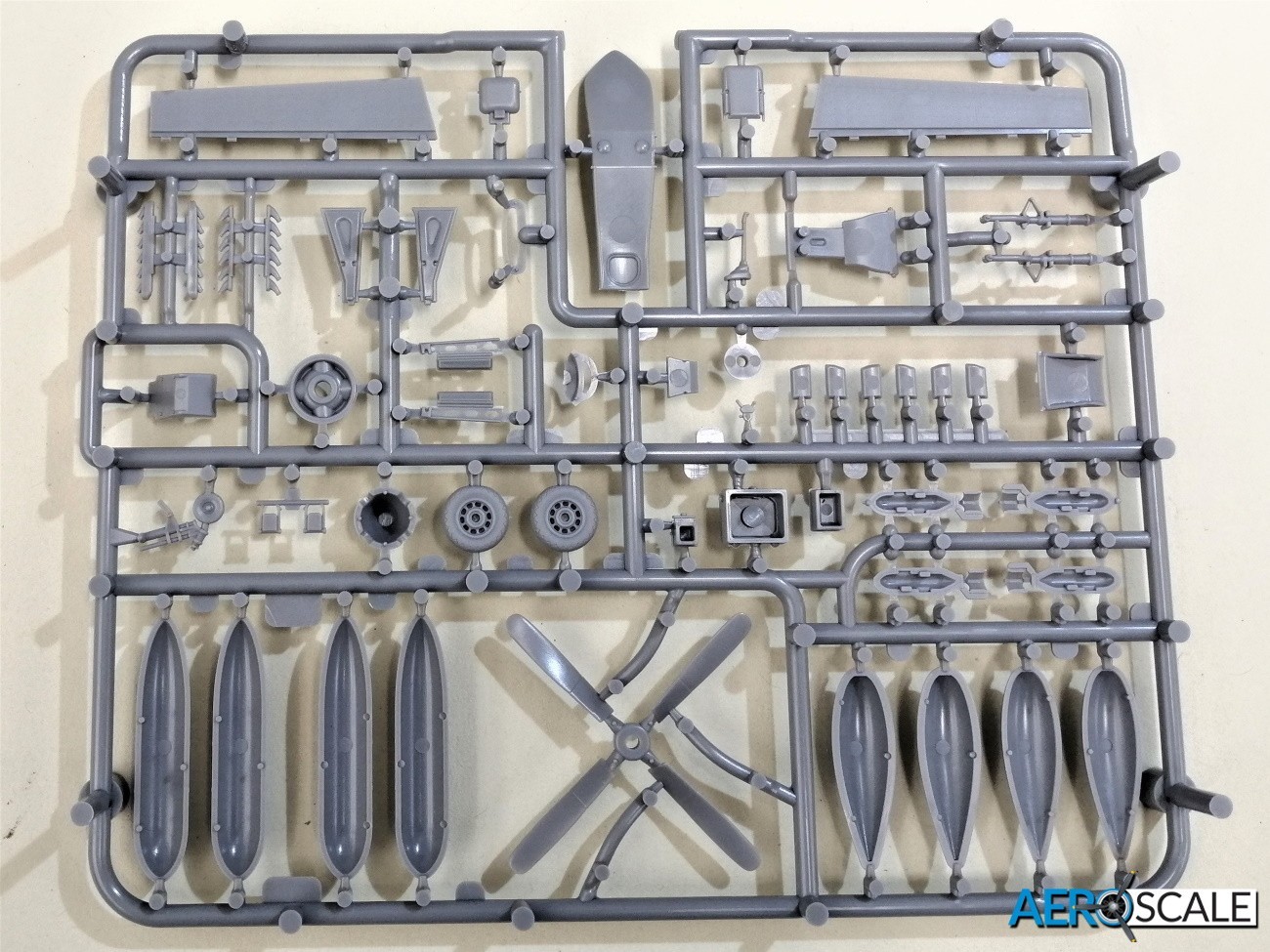
There is an excellent amount of detail in the cockpit. The detail on the plastic is impressive and this is backed up with quite a few decals replicating instruments and switches. The side walls of the cockpit and the tail wheel bay are detailed with raised rib work. Additional detail for the sidewalls includes throttle and electrical boxes There are two types of seats: Warren McArthur or Schick Johnson, depending which marking option you go for. Detail extends to the rear of the pilot with separate parts for the radio equipment and battery. Interestingly ARMA Hobby has provided three different layouts for this area. The two options without the fuselage fuel tank are packed with electronic equipment. ARMA Hobby has included PE [unpainted] or decal seat harnesses.

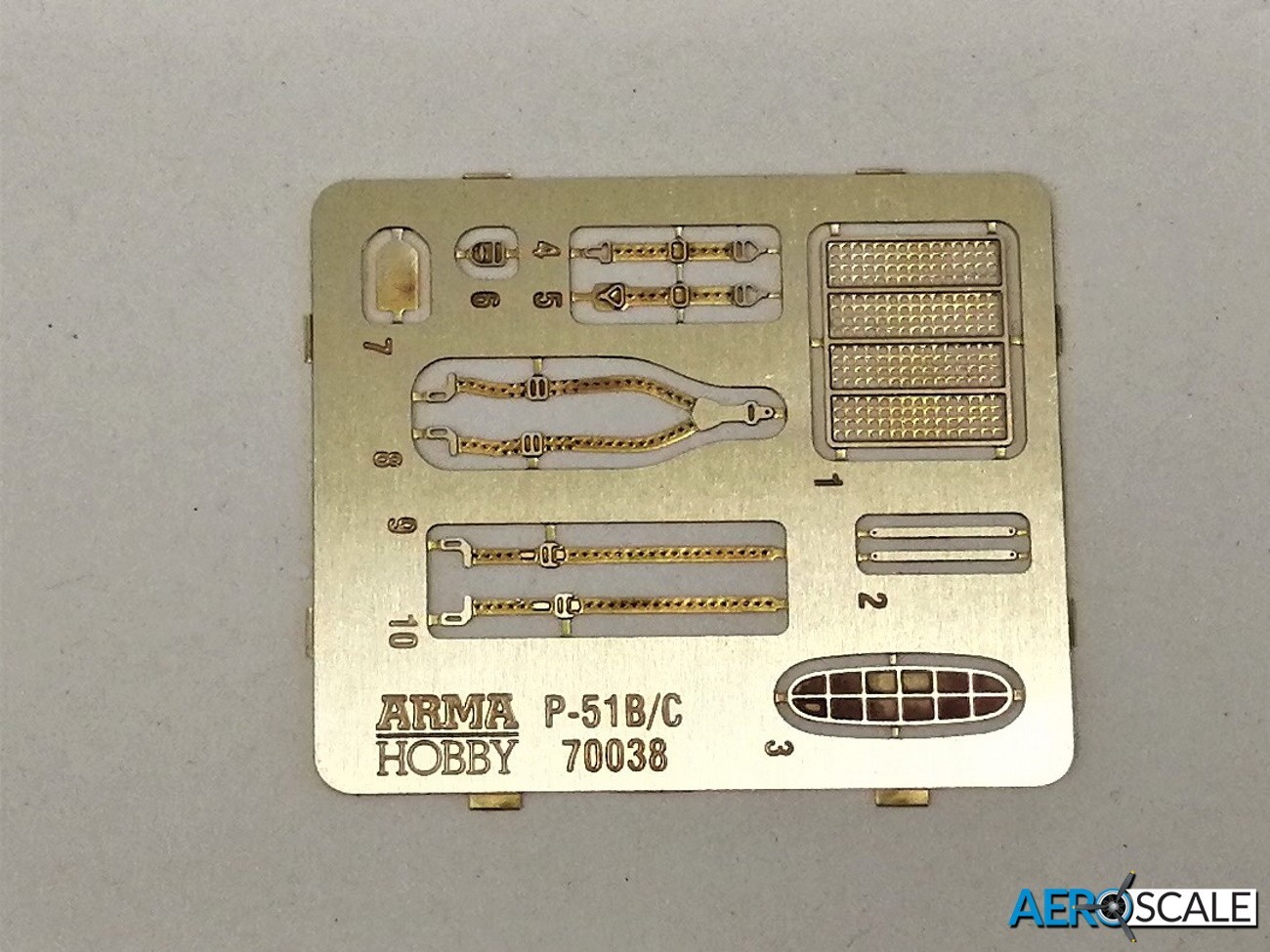

The kit offers two types of canopies: the hinged flat framed or Malcom hood. There are five clear pieces for both canopy types and both can be modelled open. The open position of the flat framed is moulded in one piece, making life much easier to fit.

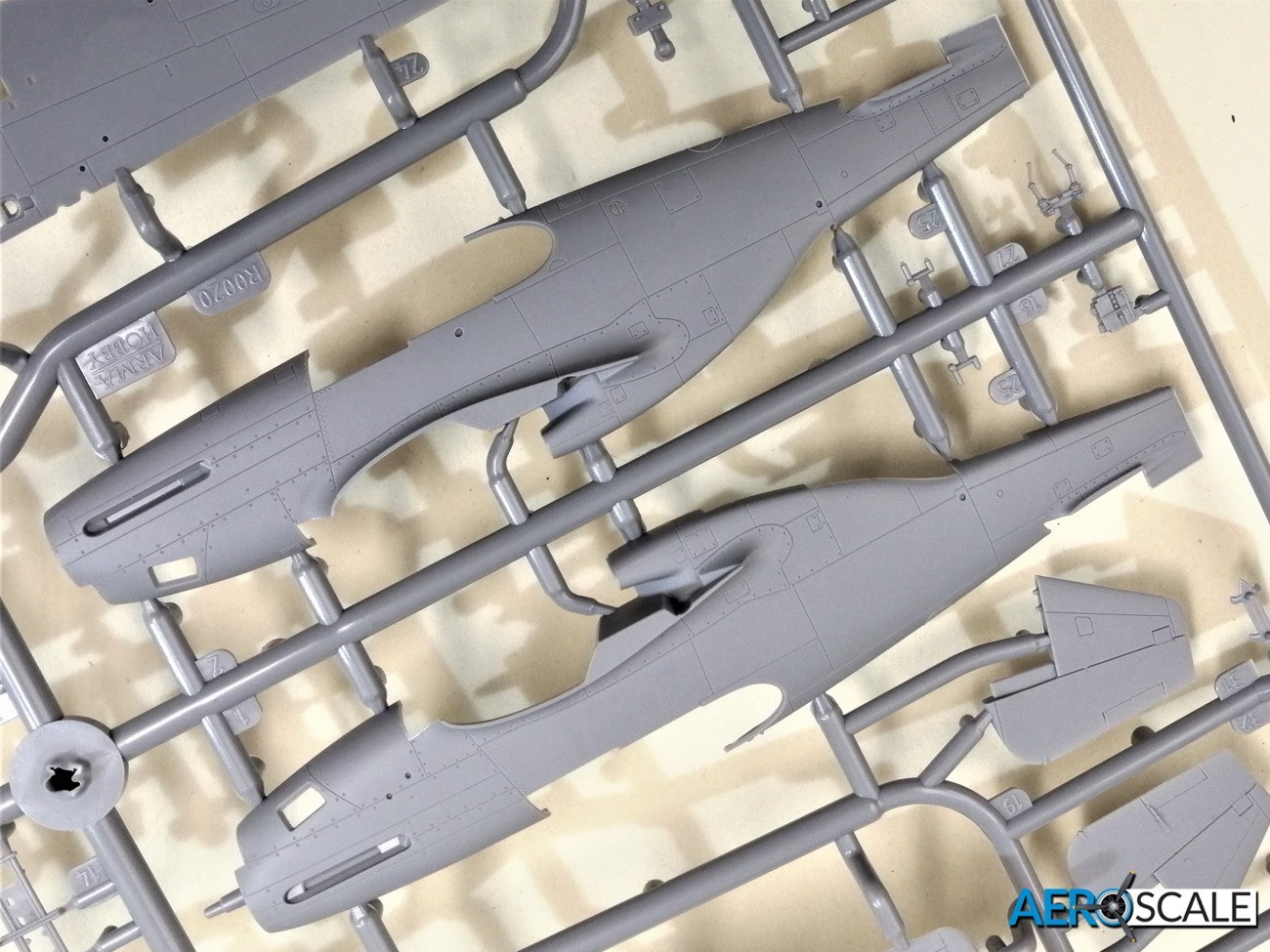


The fuselage halves are tailless as you have the choice of fitting a filleted or non-filleted tail. There are two styles of vent for the carburettor air intake and there is a blank piece that was used in cold weather. The kit comes with the Hamilton standard cuffed propeller and there is a choice of two styles of exhaust. One has the shielding protecting the pilot from glare which was used principally on the RAF Mustang Mk.III. The air duct under the fuselage is also a focus for a number of detailed parts including two PE. This release features the filler cap for the self-sealing fuel tank aft of the pilot's seat that started with P-51B-5-NA or block 5. To be accurate option three [F-6] and option four did not have the additional fuselage mounted fuel tank so you need to fill in the filler cap. If you choose to do the photo reconnaissance F-6, then you need to drill out the camera port. ARMA Hobby has marked the area to drill on the inside of the left fuselage. There is a clear plastic window to glue in place

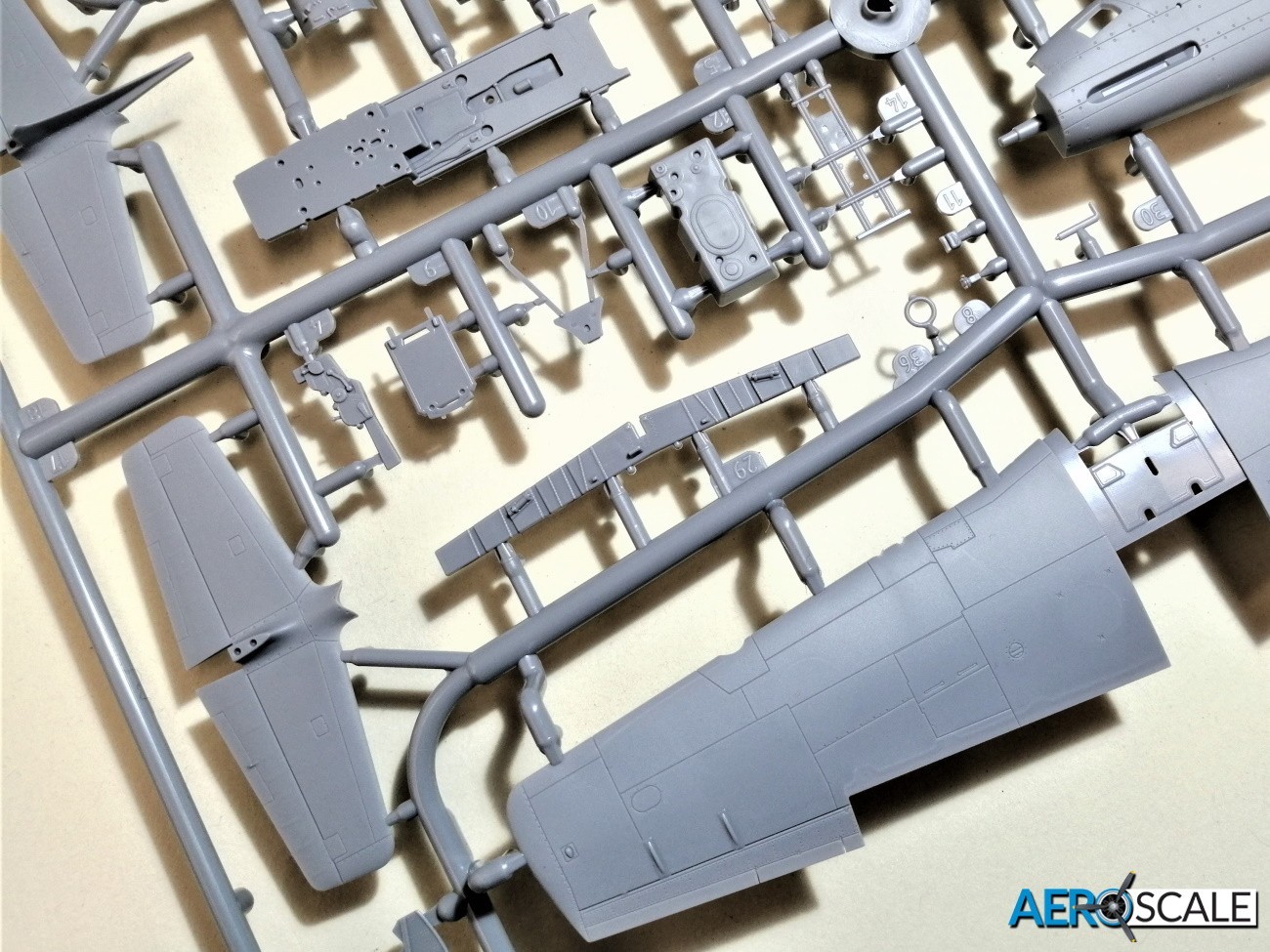
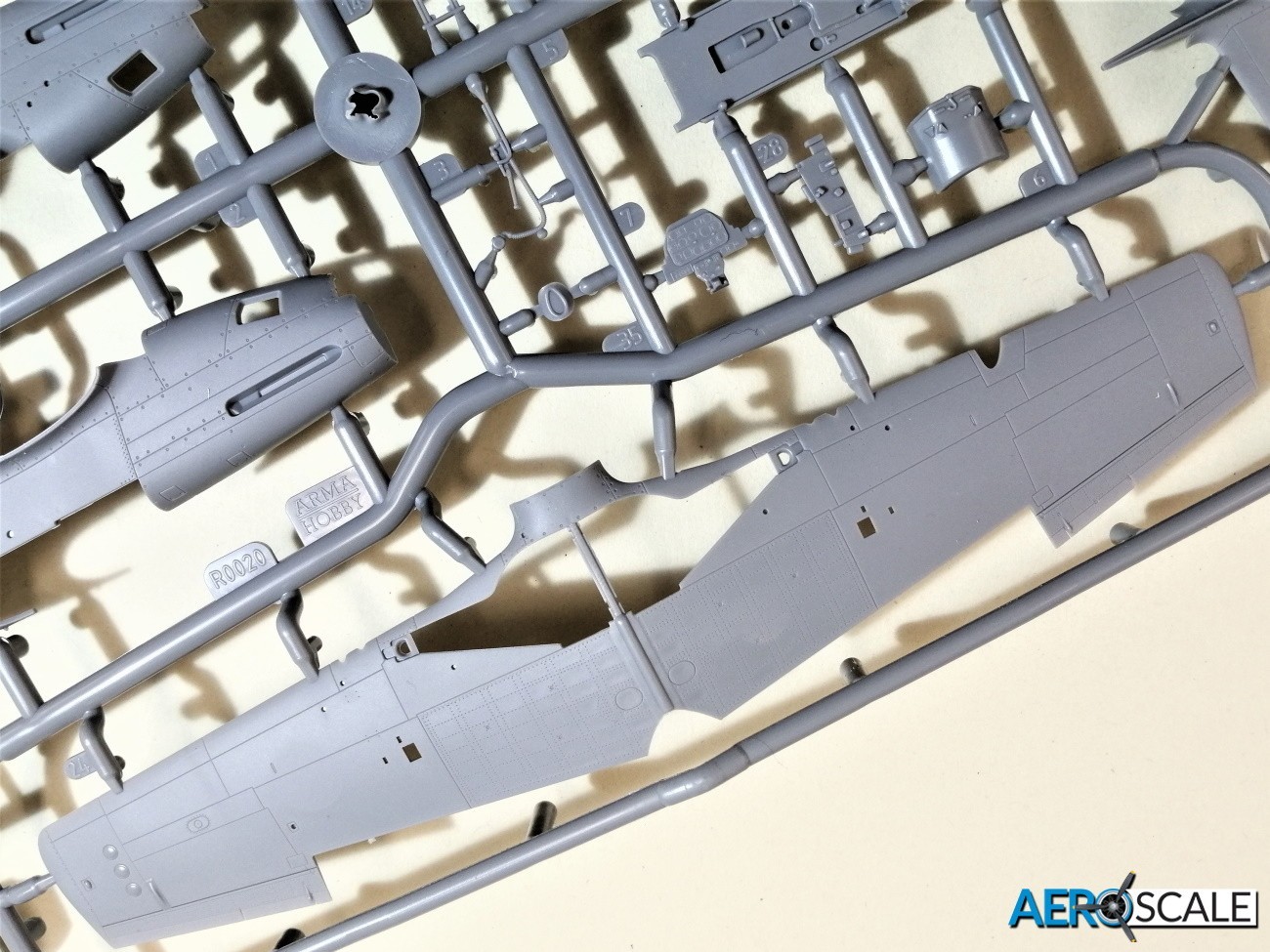
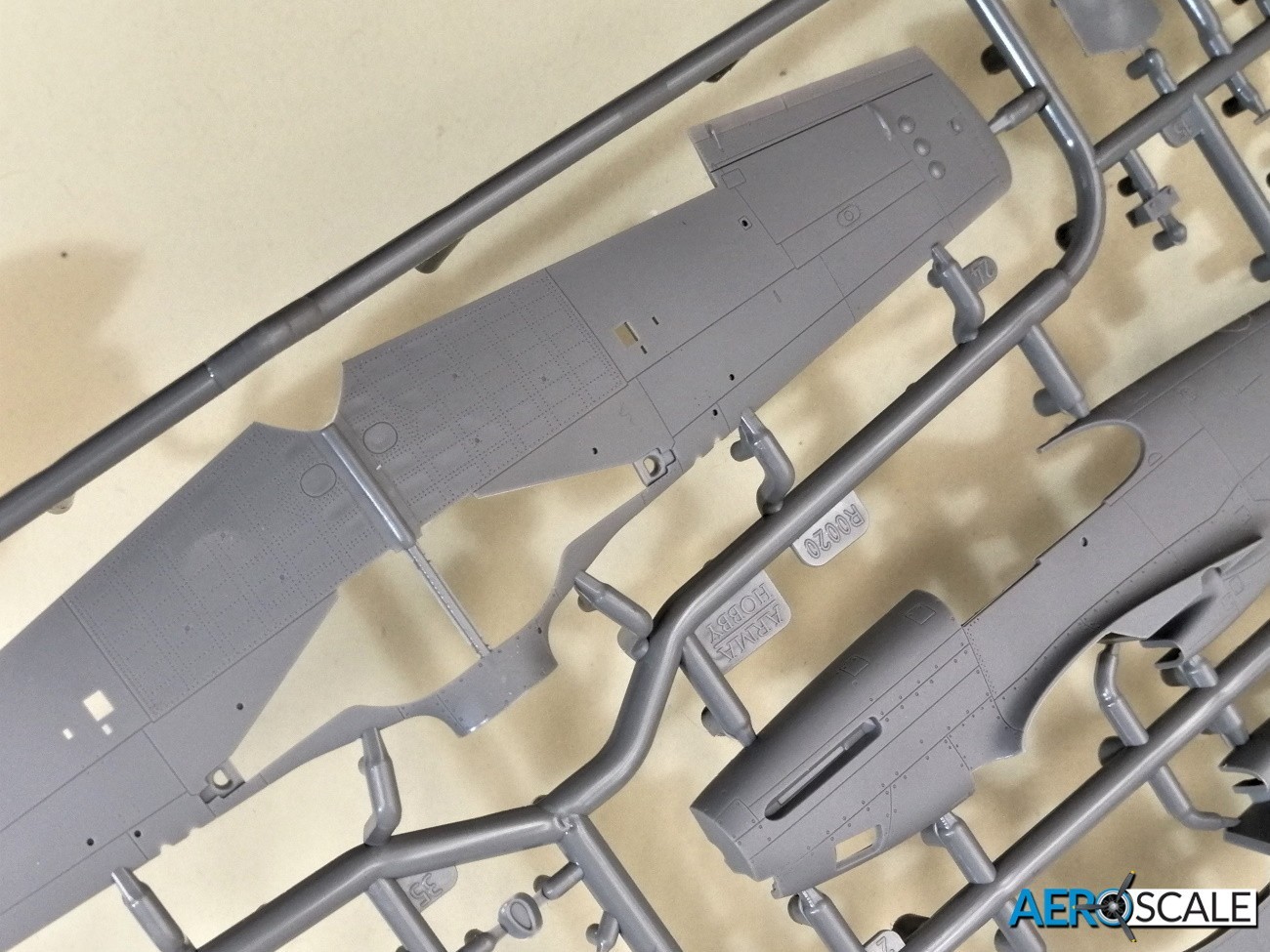
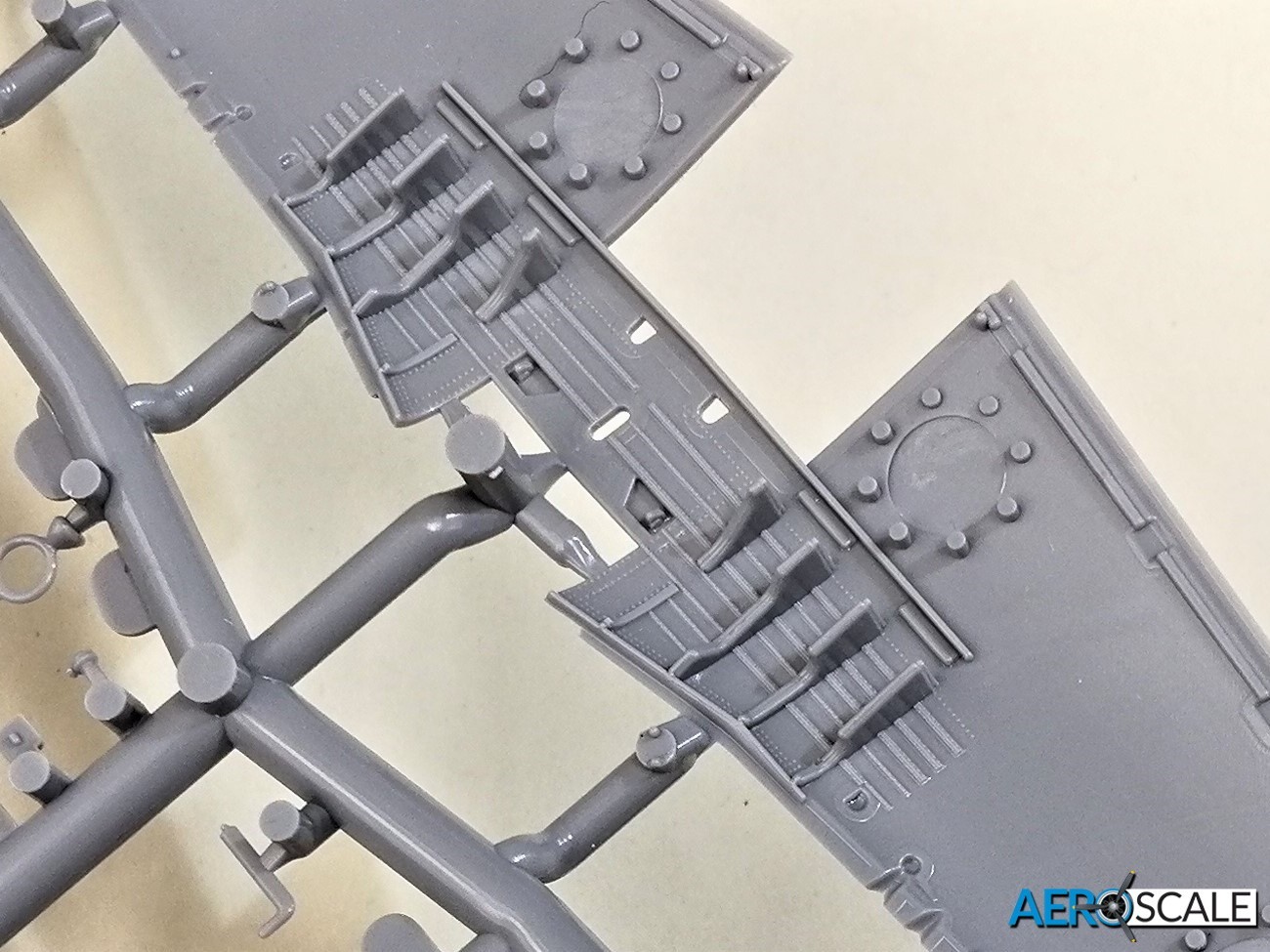
The wings are in two pieces with a one piece lower and unusually a one piece upper. A really nice touch is the slightly depressed panels on the underside of the wing where the rivet detail is. It’s very subtle [difficult to photograph] but it’s there. The flaps are separate and can be fitted in the dropped position. The detail in the undercarriage [U/C] bay is moulded into the top wing and it looks superb. Normally the cost of such detail are signs of shrinkage on the other side, but there is no sign of it. There is a section of the wing spar to add to the U/C bay too. If you want to attach ordnance under the wing, then holes need to be drilled. There are guide holes to start you off. As mentioned, there is a choice between a filleted or non-filleted tail. Both are attached to the one-piece horizontal tailplane. Its great to see the canvas covered control surfaces represented accurately by ARMA Hobby. No sagging canvas between the ribs, just rib tape on show.

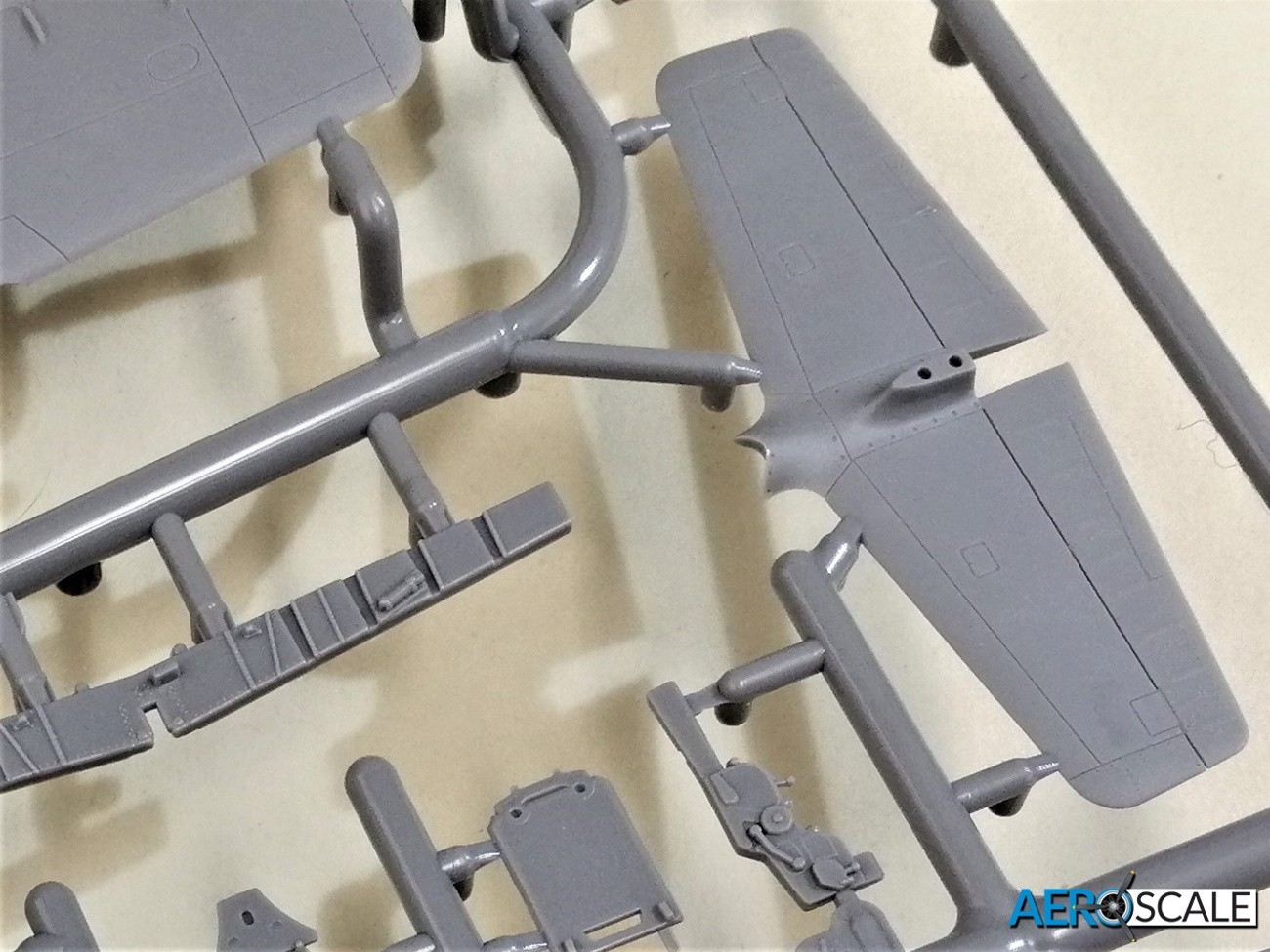
The main wheels are one piece with beautifully detailed hubs and diamond tread. The tyres are slightly weighted. The rear wheel unit is one piece and superbly moulded. The detail on the inner doors of the main undercarriage is really well executed, replicating the pressed aluminium very well. The only area I can see any shrinkage as a consequence of all the detail is on the outer gear door. There a hint of shrinkage on the exterior surface although this will be easy to put right with a sanding stick as there is no surface detail.

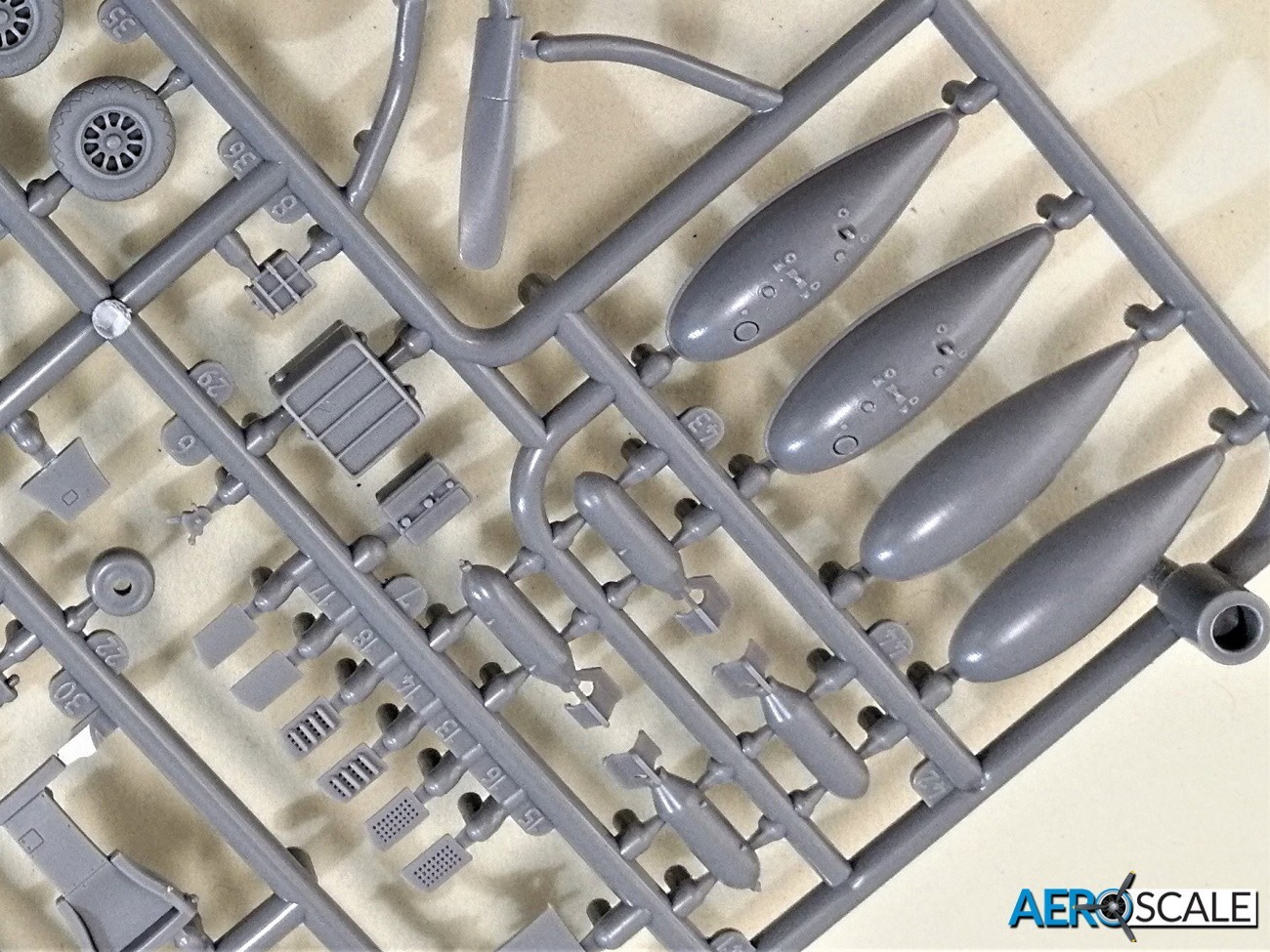
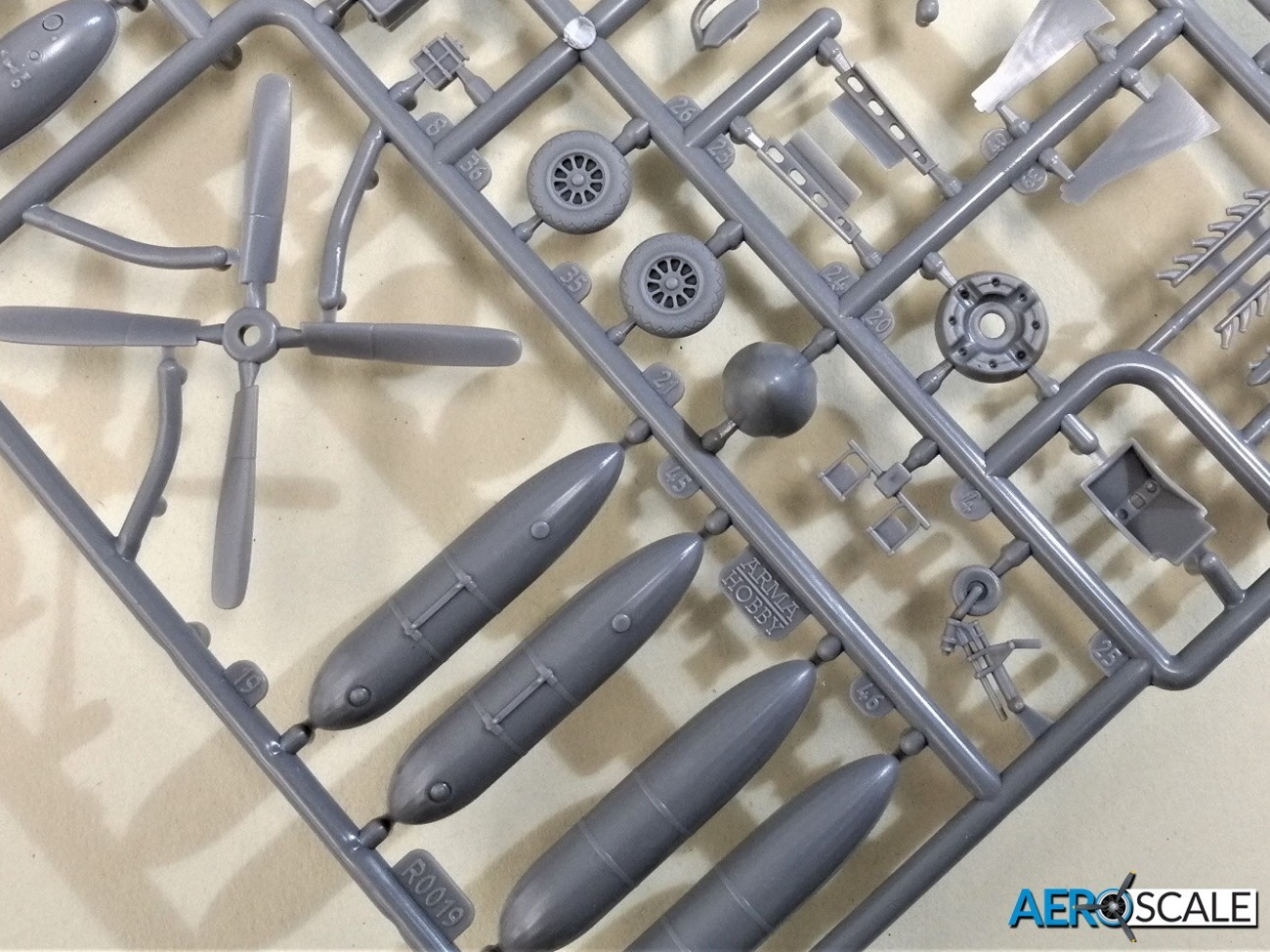
The kit includes the paper 108 gallon and aluminium 75-gallon fuel tanks. The ribbed construction of the paper tanks looks particularly good. Also included are two 250 lb bombs along with shackles.
The photo etched fret contains seat harness and radiator grills.
The vinyl paint masks are for the glazed parts and wheels. Oddly the instructions don’t mention their use.
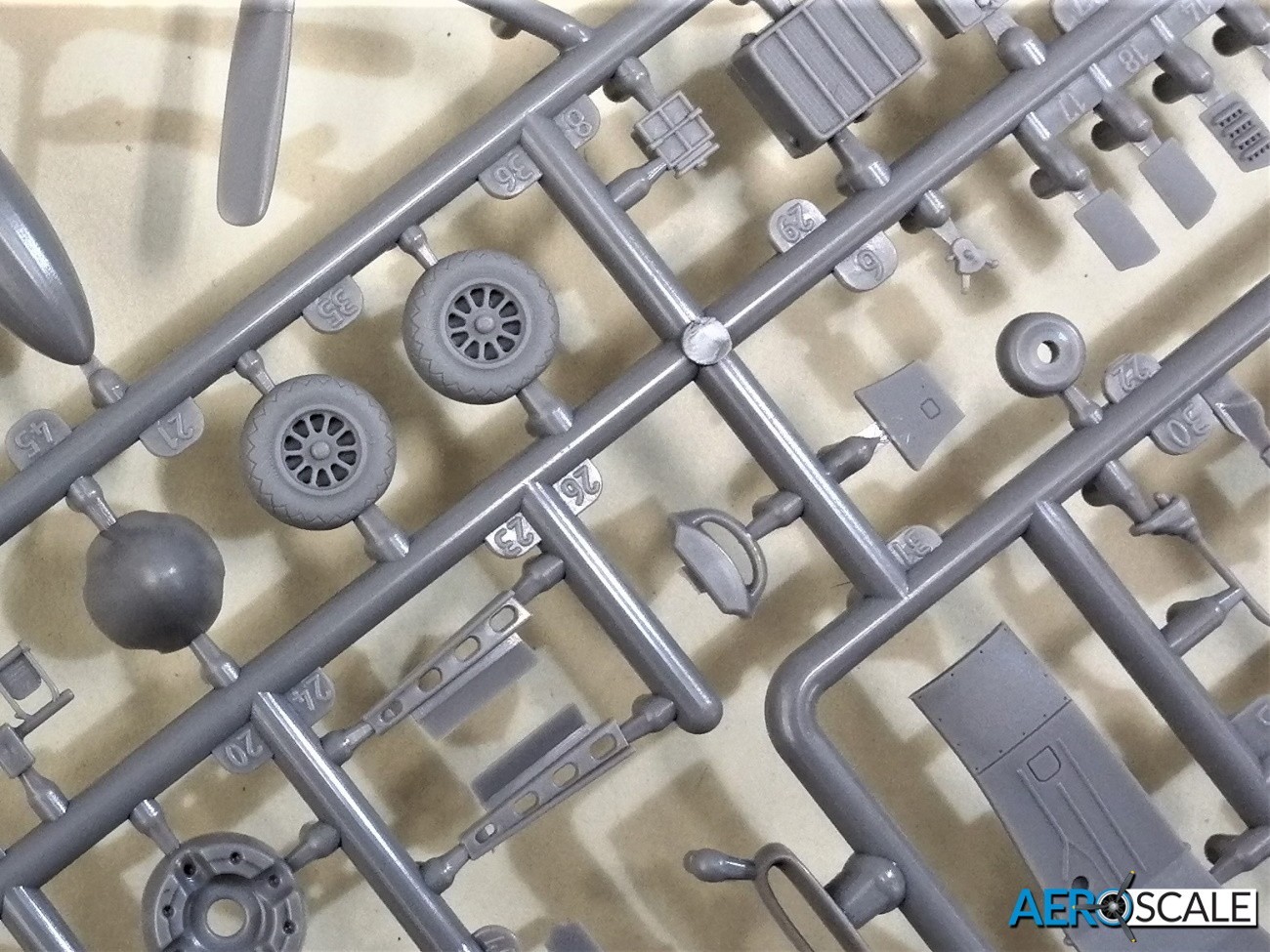
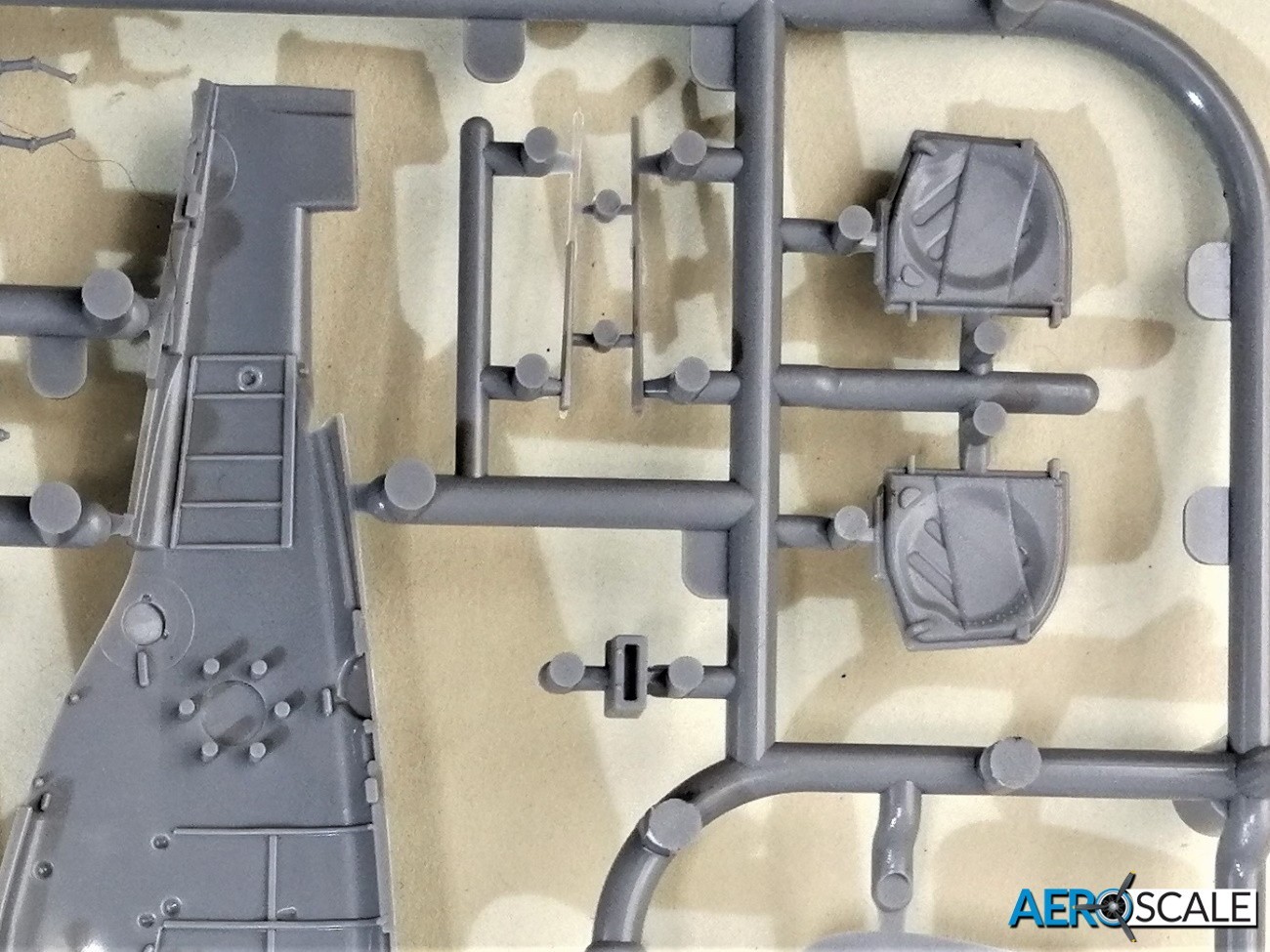
The decals printed by Techmod look superb: glossy, with good colour density and the definition is superb. Option ‘3’ features chequerboard patterning on the nose and tail and you will be pleased to know that they are included on the sheet.

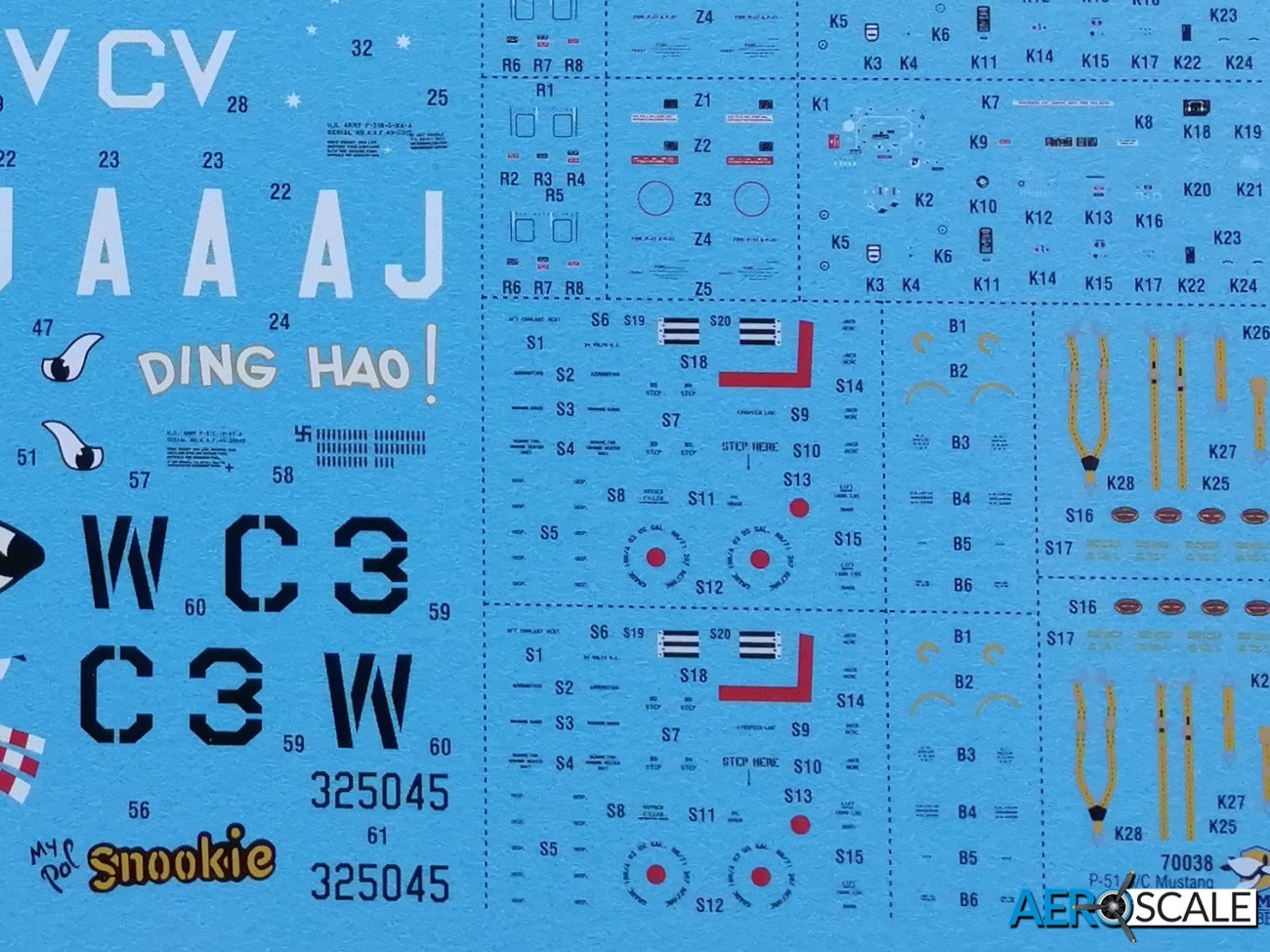
There are seven marking options including a good mix of camouflaged and natural metal subjects.
- P-51B-5-NA Mustang, 43-6315/AJ-A, “Ding Hao”, pilot: Maj. James H. Howard MH, 356th Fighter Squadron, 354th Fighter Group, Boxted UK, April 1944.
- P-51C-11-NT Mustang, 44-10816/278, “Evalina”, pilot: 1st Lt. Oliver E. Strawbridge, 26th Fighter Squadron, 51st Fighter Group, China, January 1945.
- P-51C-11-NT Mustang, 44-10816/278, “Evalina”, Captured, 1945 (pilot Maj. Yasuhiko Kuroe).
- Mustang III, KH516/WC-F, pilot: Kpt. Jerzy Mencel DFC, 309 Squadron Polish Air Force, shot down Me-262 jet fighter on April 9 1945.
- F-6C-1-NT Mustang, 42-03213/IX-H, ” ‘Azel”/”Boomerang”, 162nd Tactical Reconnaissance Squadron, 10th Photographic Group (Reconnaissance ), Chalgrove UK.
- Mustang III, FB244/CV-V, 3 Squadron RAAF, Fano in Italy, April 1944.
- P-51C-10-NT Mustang, 43-25045/C3-W, “Snookie”, pilot: Lt. Edward T. Pawlak, 382nd Fighter Squadron, 363rd Fighter Group, France, July 1944.
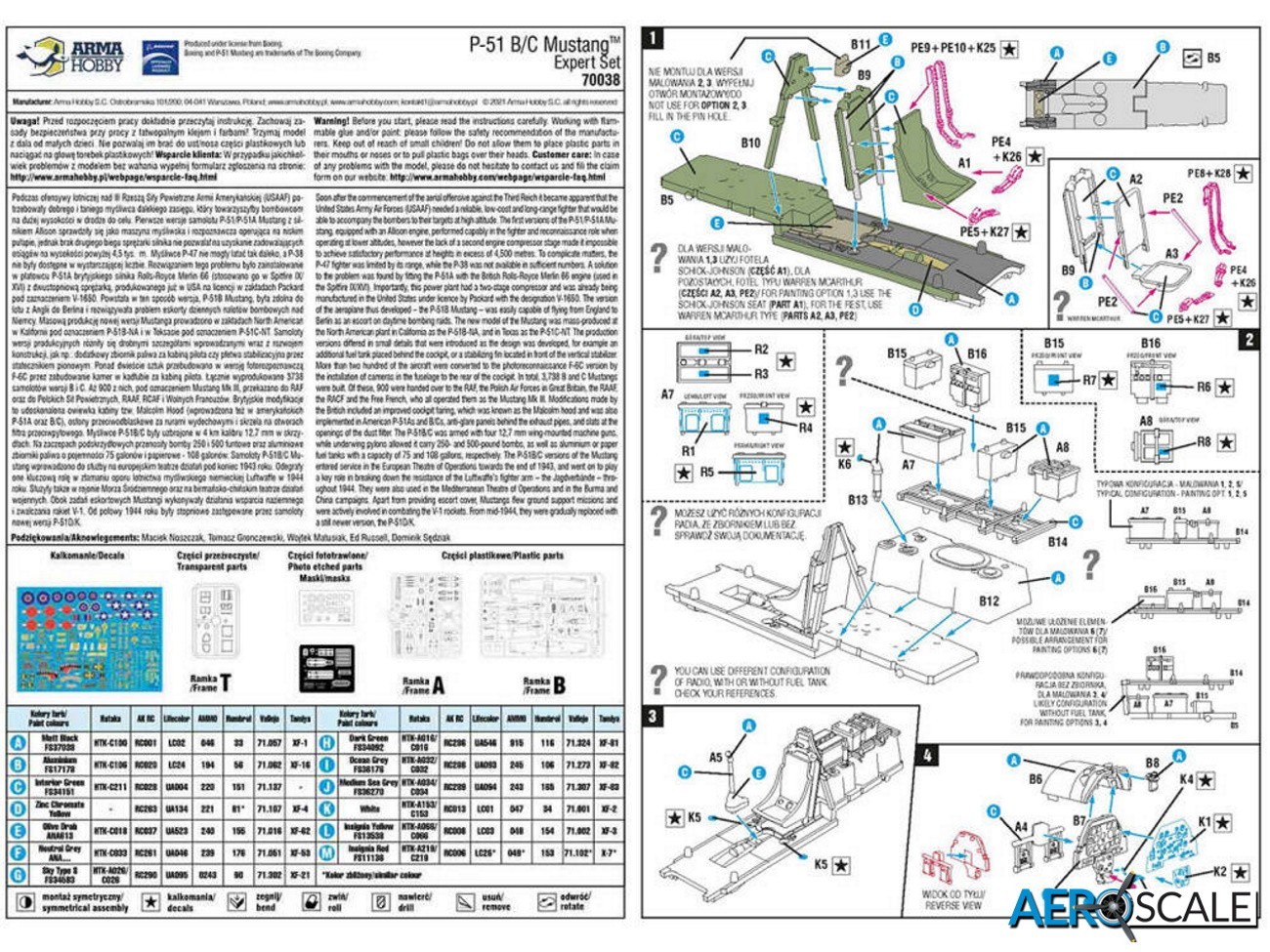
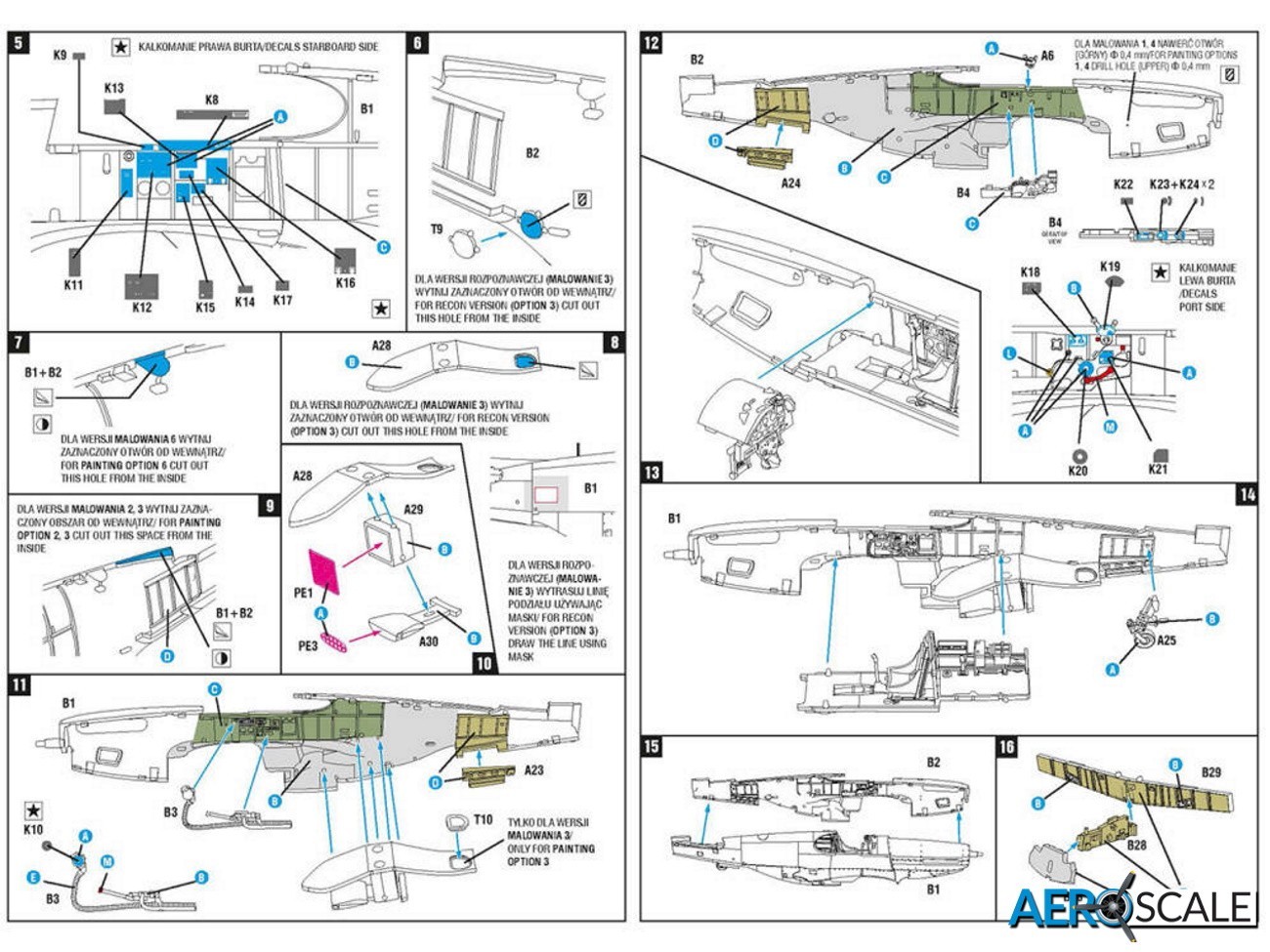
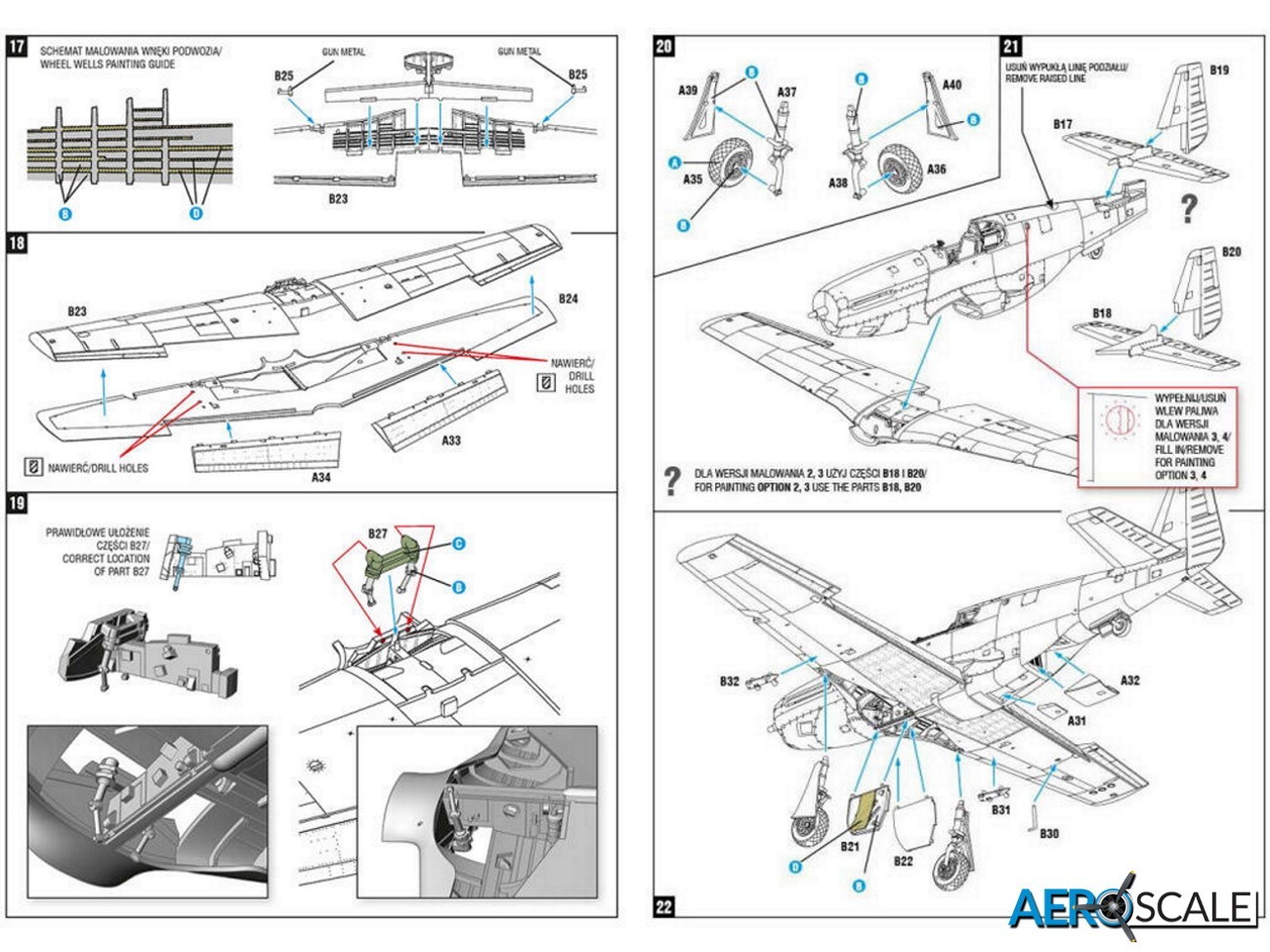
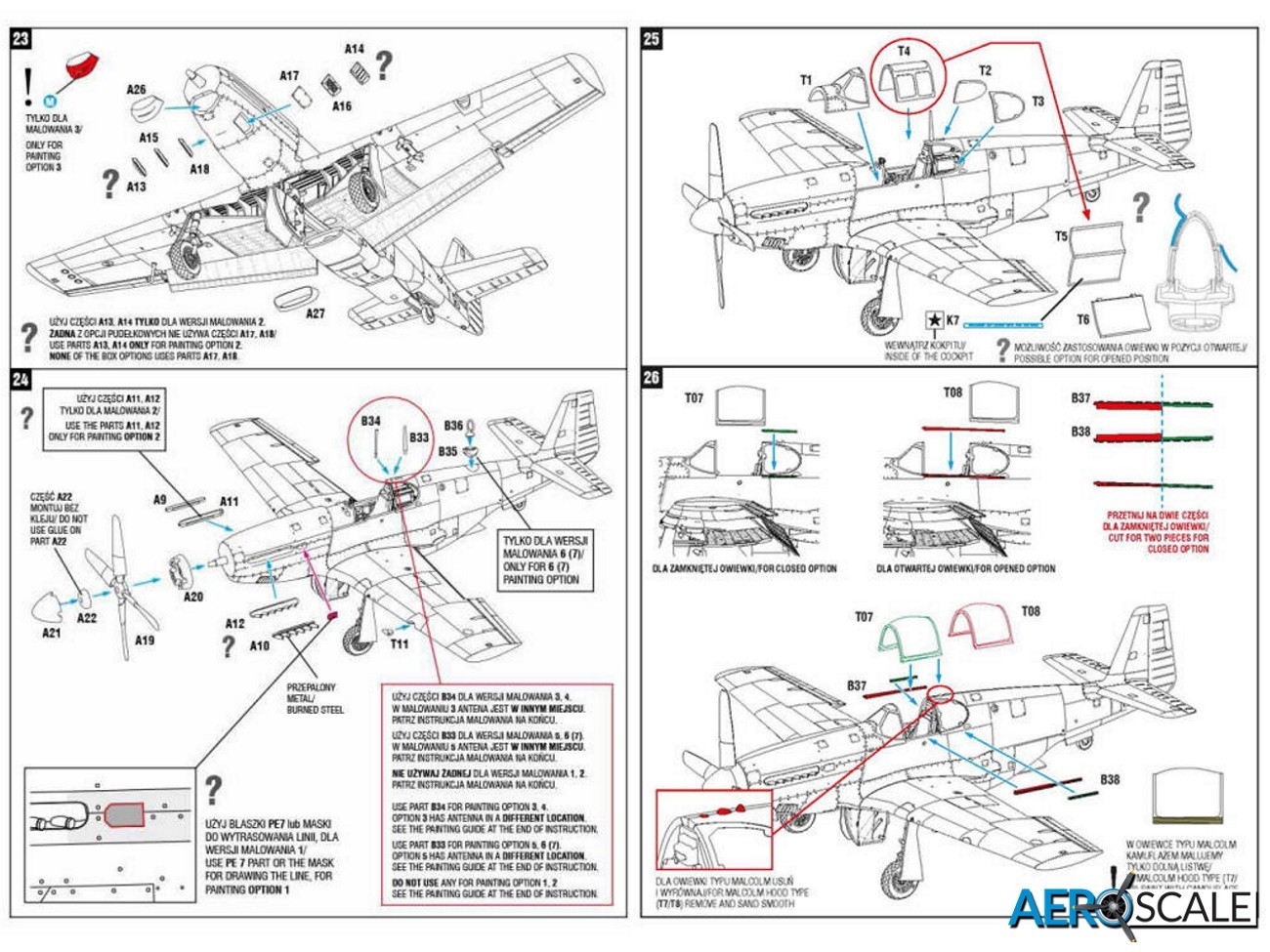

The instructions look pretty straightforward, just be aware of the various options for the aircraft you select markings wise.
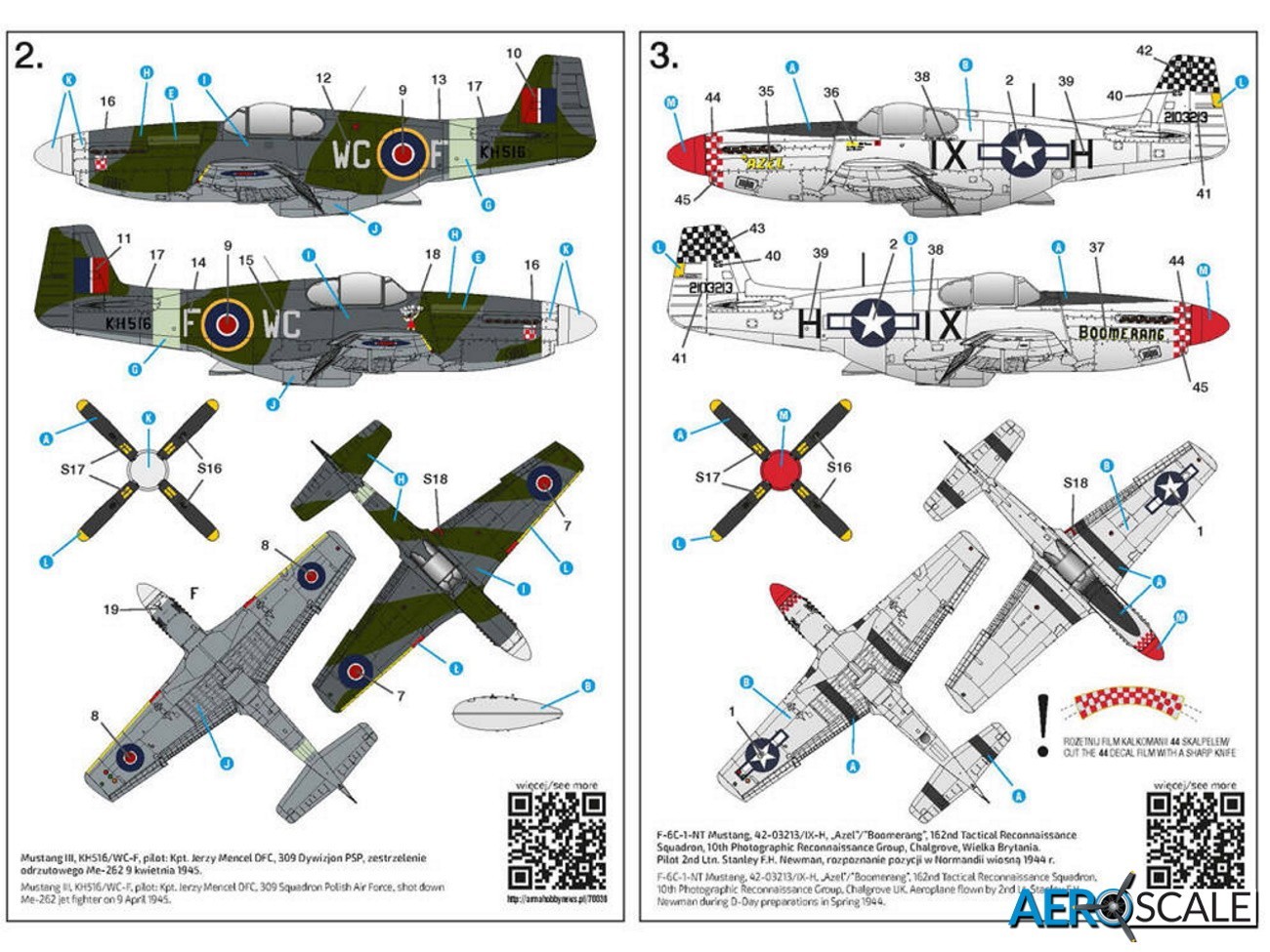
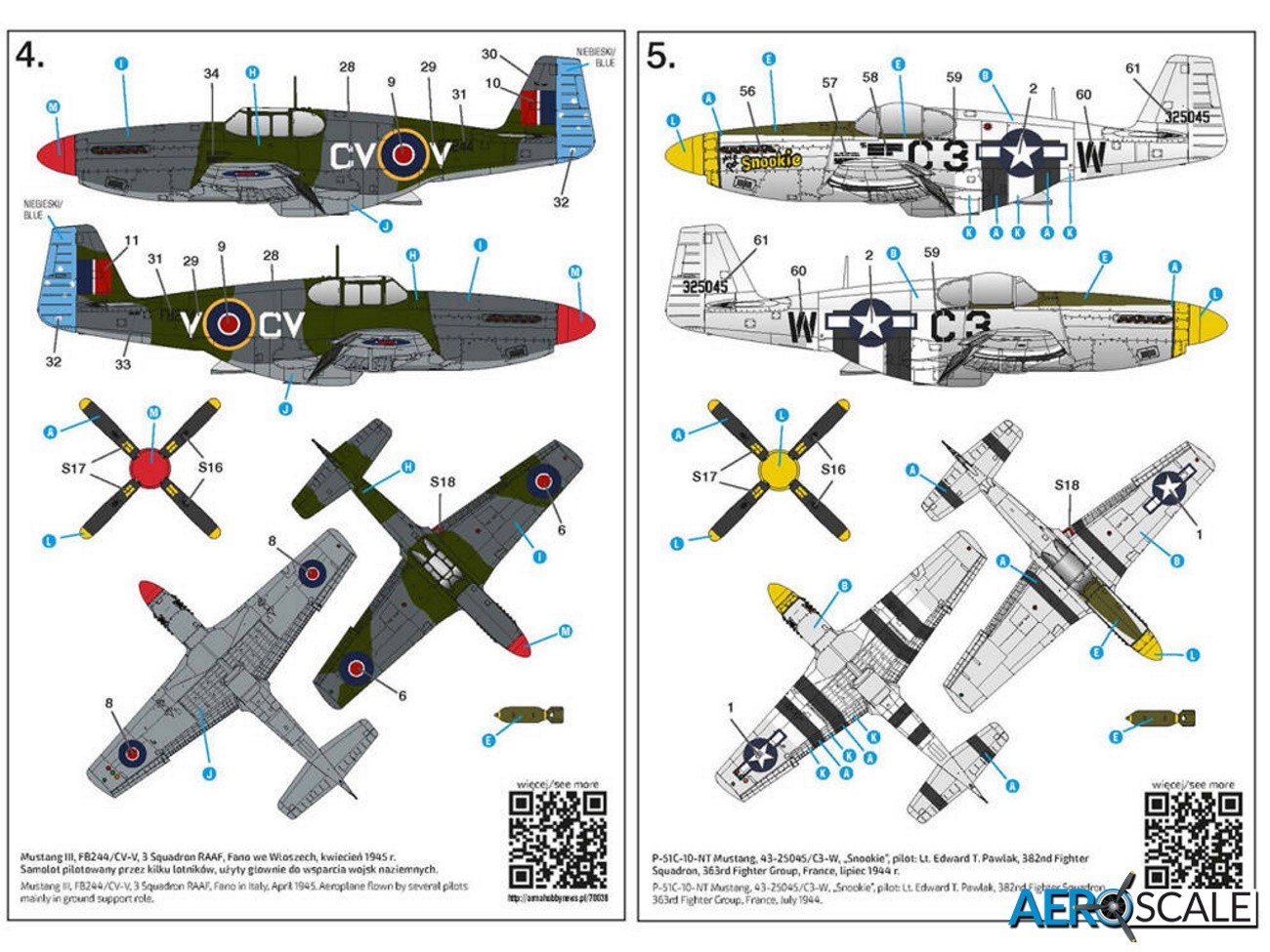
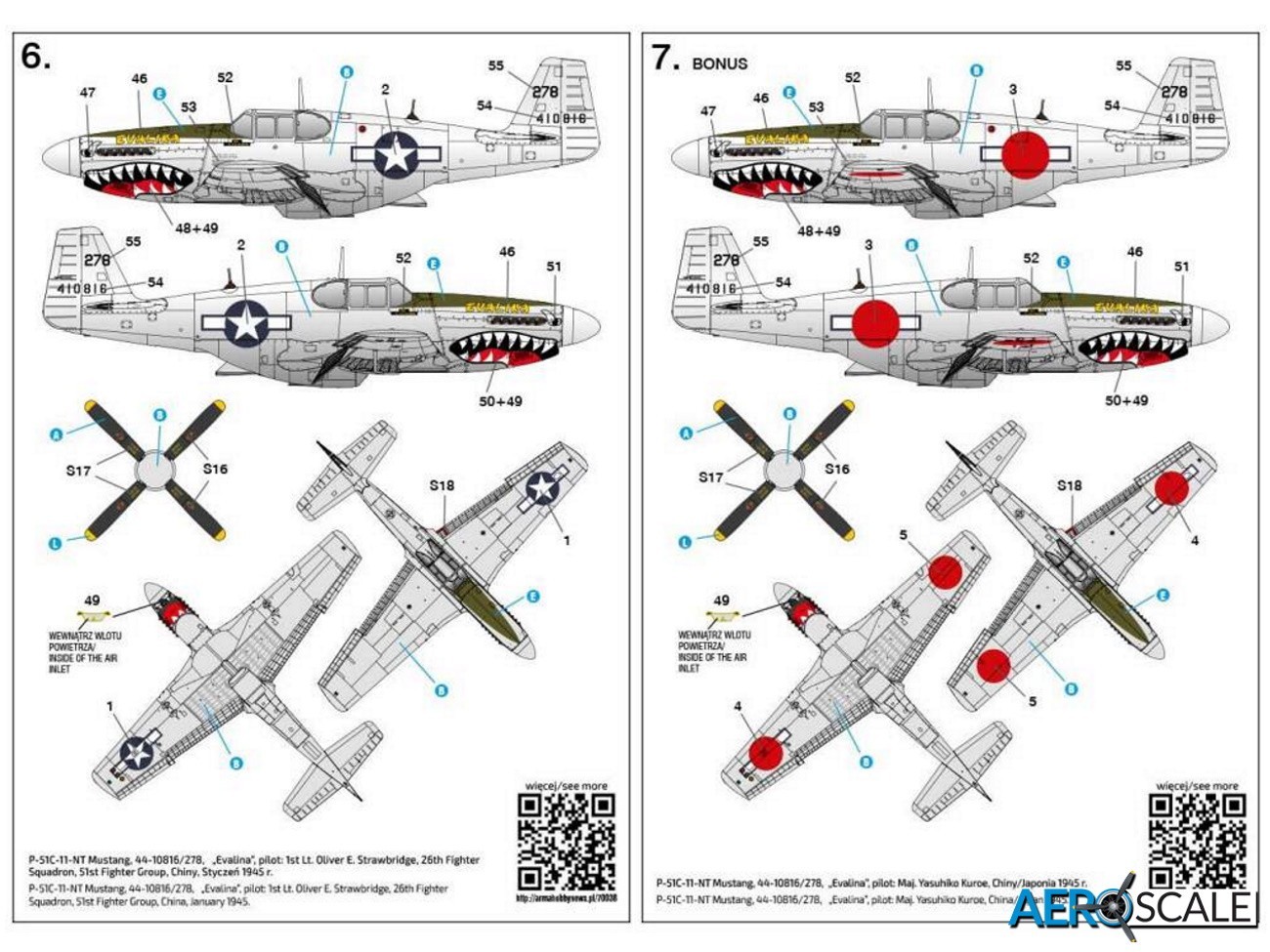
Conclusions
After reviewing ARMA Hobby’s Wildcat a few weeks ago, I had high hopes for the P-51B/C. ARMA Hobby has not let us down and they have come up with the definitive P-51B/C in 1:72 scale. The amount of research and detail ARMA Hobby has done in producing this kit is evident. It’s on a par with the sort of detail that we have come to expect from Eduard, which is very high praise.
Many thanks to ARMA Hobby for this review sample.
70038 - P-51 B/C Mustang™ Expert Set – 1:72
Please remember, when contacting retailers or manufacturers, to mention that you saw their products highlighted here – on AEROSCALE.
NAA F-6 Mustang Photo Reconnaissance [Source: ARMA Hobby Blog]
![NAA F-6 Mustang Photo Reconnaissance [Source: ARMA Hobby Blog]](/upload/media/entries/2021-12/27/1657-entry-48-1640614010.jpg)











